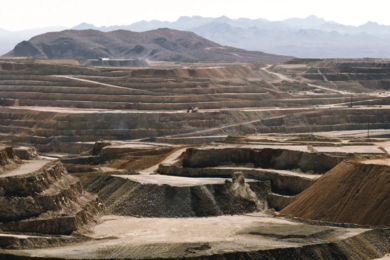The much-anticipated influx of capital from new mining-focused private funds is taking longer than expected to hit the market, but market experts expect more deals to hit in the second half of 2014 and an increase in activity in early 2015. Ernst & Young estimates that mining-focused private capital funds have amassed at least $10 billion, and possibly as high as $20 billion, to invest in the global metals and mining sector. The firm’s global mining and metals transactions leader, Lee Downham, said mergers and acquisitions activity is likely to remain subdued for the rest of 2014 despite a strong deal pipeline and a private capital funds war chest yet to be unleashed.
“Dealmaking in the sector continues to be cautious, partly due to the continuing commitment to capital discipline, but also due to a lack of urgency over investment given the lack of competition for assets,” Downham said in a statement.
“Some standout deals and hostile bids during Q2, combined with a strong deal pipeline and substantial capital waiting to be deployed by mining-focused funds, suggest that momentum is building.”
While Ernst & Young’s year-over-year comparisons, which are based solely on completed deals, show a decline in deal volume and value in the first half of 2014, data compiled by SNL Metals & Mining that tracks announced deals indicates that the number and value of deals is on the rise.
Ernst & Young data shows total completed deal values for the first half down 69% year over year to $16.7 billion from $53.8 billion, with deal volumes down 34% to 254, from 386 in the first half of 2013.
Meanwhile, according to SNL data, the first six months of 2014 saw 117 announced deals totalling $13.21 billion, a 56% increase on the 75 deals worth around $11.47 billion announced in the same period of 2013.
Importantly, Ernst & Young’s figures include deals involving steel, with some $4.36 billion of transactions involving that commodity; SNL Metals & Mining data excludes such deals.
The largest deal announced during the first half of 2014 was the $3.49 billion acquisition of Osisko Mining Corp by Yamana Gold and Agnico Eagle Mines, which helped drive up total deal value.
The gap between seller and buyer price expectations has been a factor in deals being delayed or not completed and even forcing hostile takeovers in some instances.
The consensus among industry watchers is this will still remain an issue in the last half of 2014 and early 2015, perhaps even longer.
While some believe the gap will be a factor in mining M&A deals for some time, Ernst & Young expects it to narrow in the first half of 2015.
Downham attributes the forecast reduction in the valuation gap to improving commodity prices and positive results from miners’ cost-reduction programs.
“Instead of having to value on the promise of a cost-reduction program, you are able to value on the back of cost reductions that have come through on the income statement that you can see, and that again naturally helps to bridge that gap because you’ve got a lot more confidence in what your margins are,” he told SNL.
The consensus is that the cash being accumulated by mining-focused private capital funds is pent up and there is a demand for private equity; however, the range of opportunities available to these types of investors is viewed as limited.
According to industry experts, private capital funds are more inclined to seek out advanced assets in low-risk jurisdictions.
PricewaterhouseCoopers Australia mining leader Jock O’Callaghan told SNL that private capital investors will likely have less of an appetite for investments in developing mining countries than other new investors and China will.
“I think geographically they will have more appetite for stable jurisdictions and that will be a pretty critical factor in their investments,” O’Callaghan said. “There is also the issue of where in the asset lifecycle they would be prepared to put their money. I suspect that they will have much more difficulty investing their equity into projects that are not existing and producing mines.”
Ernst & Young’s Downham agrees that private capital buyers are most likely to steer clear of higher-risk asset buys.
“They typically won’t do the high-risk deals in high-risk geographies because they don’t necessarily have the strength of blue chip corporate behind them that gives them some protection,” he told SNL. “So they will be a little bit more exposed to the very high-risk markets and therefore you may see them avoiding those.”
However, advanced assets, where there is a reasonably high-degree of confidence in the resource that lies within the project, in low-risk locations are a lot harder to come by and much more expensive.
Nigel Lake, joint CEO and founder of corporate advisory firm Pottinger, told SNL that if private capital buyers wanted to secure these types of resources, they would have to look at earlier stage, riskier assets and find ways to value those projects in the face of much more risk than they may otherwise have wanted to take on.









